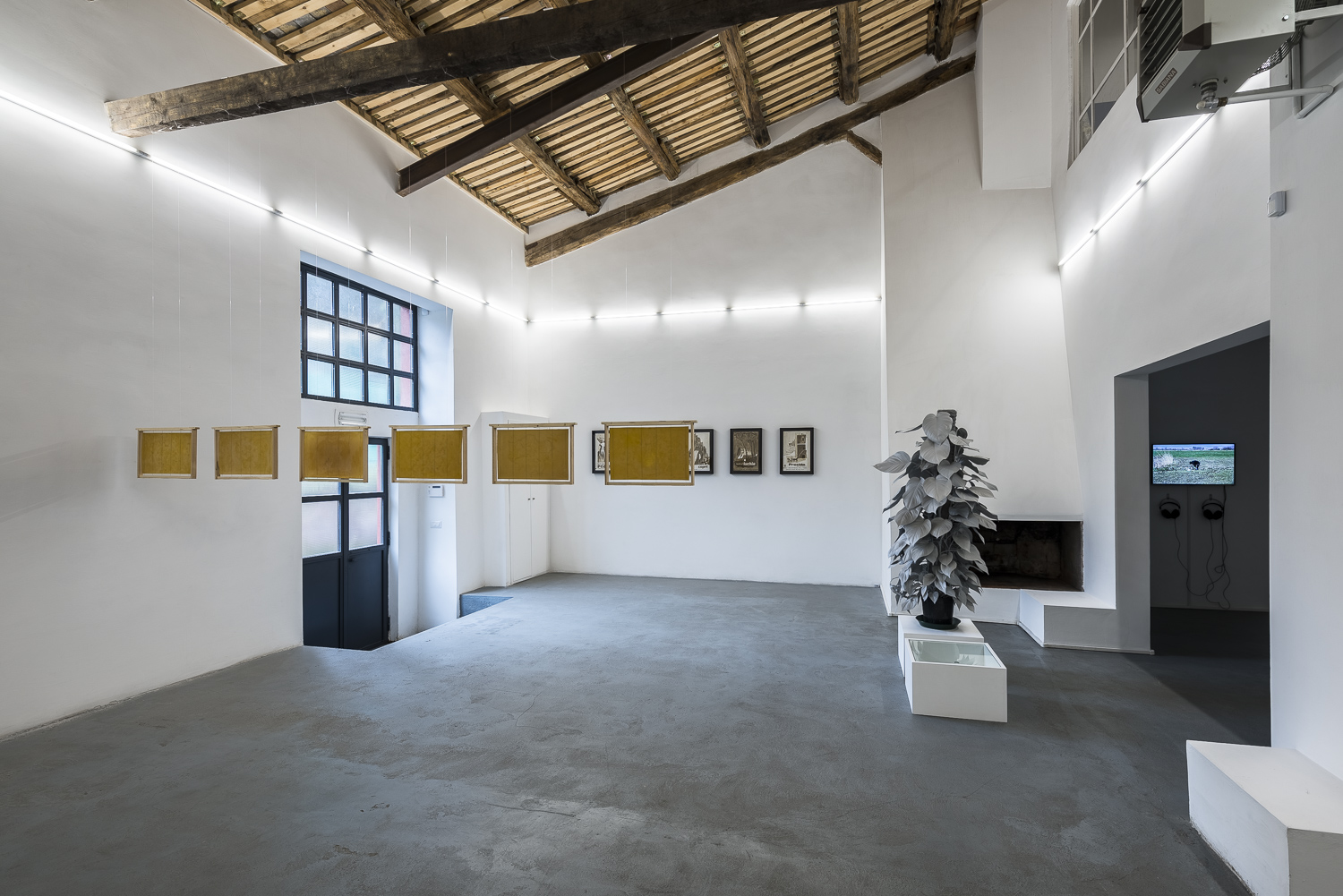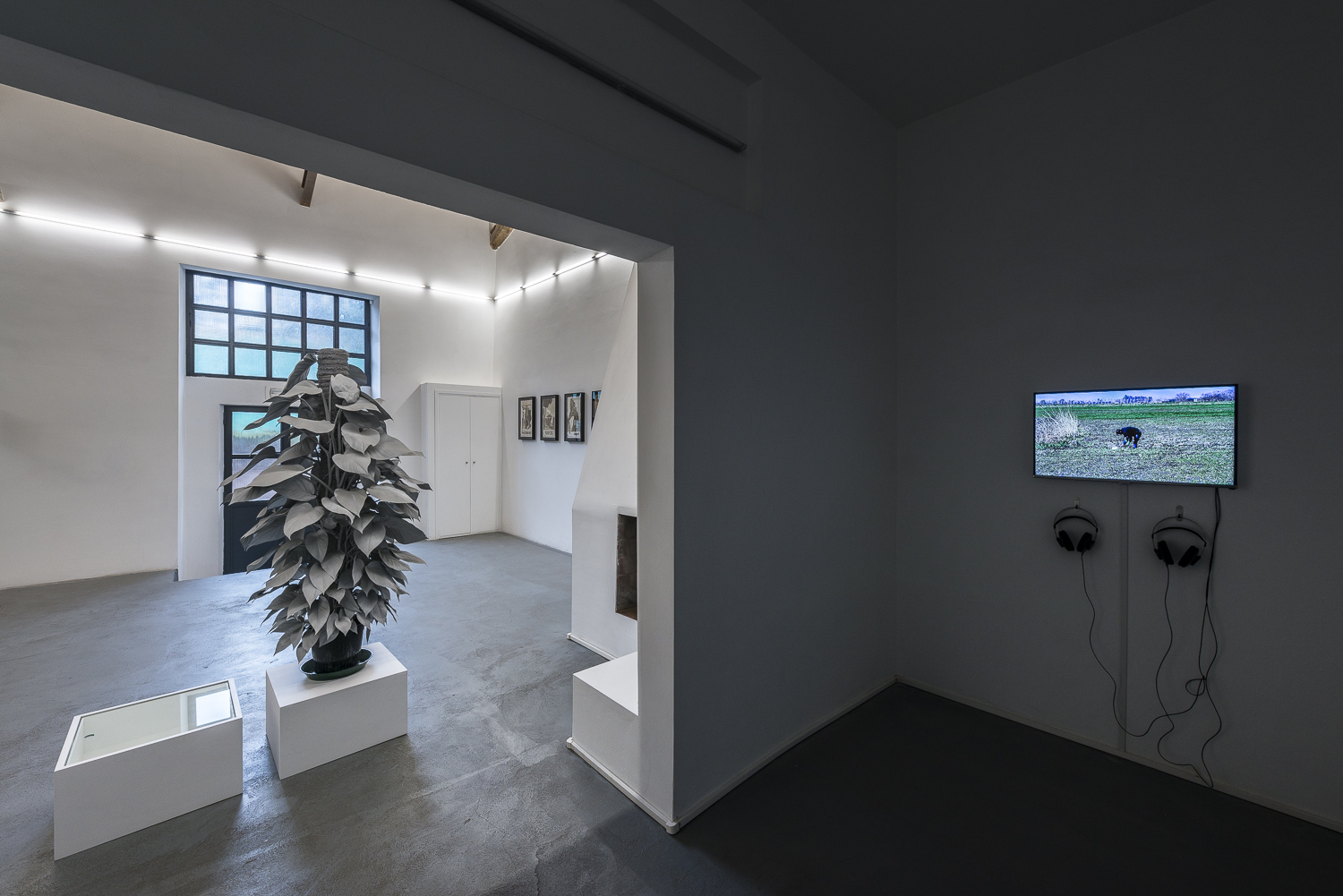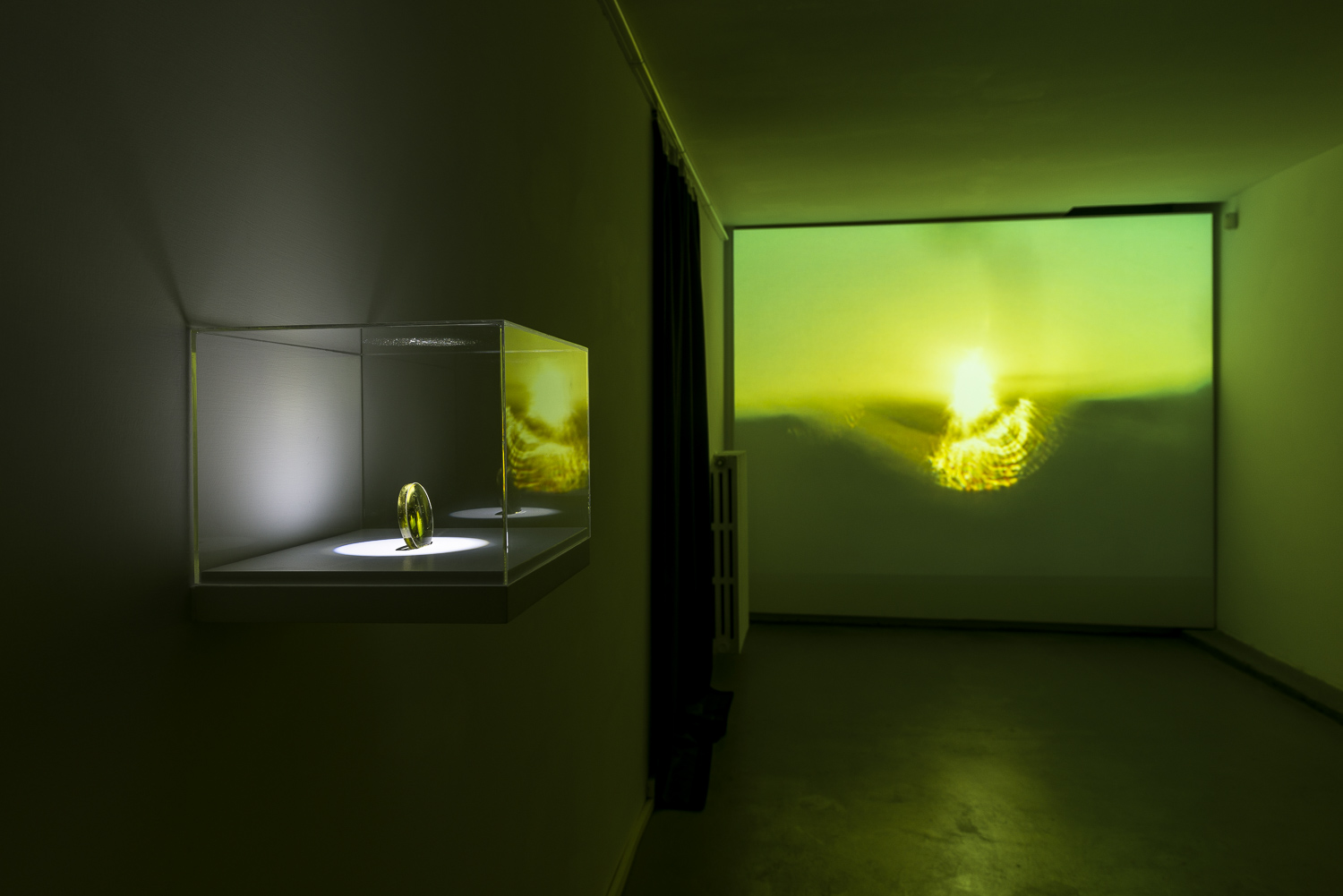PARADISO
Critical text for PARADISO, a group exhibition with artists Marlon de Azambuja, Elena Mazzi, Estefanía Peñafiel Loaiza, Juan Esteban Sandoval, and Óscar Santillán . AlbumArte, Rome, March – April 2018.

PARADISO, exhibition view, AlbumArte, 2018.
Ph. Sebastiano Luciano, courtesy AlbumArte.
.
Paradiso is a collective exhibition of Latin American artists living in Europe, with an Italian artist guest.
From the Song of Sacred “Paradise” in Dante’s Divine Comedy, to the sensual Paradise by José Lezama Lima, passing by John Milton’s Lost Paradise, the exhibition has literary references and a contemporary value that calls into question the concepts of ideal place, privileged observation point, disenchantment, utopia. These imaginary places in mind and memory nevertheless become so concrete if immersed into the contradictions and conflicts that characterize our times. The illusion of building a paradise on Earth, made of well-being, growth, consumption, is destroying and altering its balance, in an unfettered search for material and immaterial value to be extracted from the bowels of the planet and the lives of its inhabitants.

PARADISO, exhibition view, AlbumArte, 2018. Ph.
Sebastiano Luciano, courtesy AlbumArte
.
Attracted by an imaginary paradise, nurtured in their hopes and dreams, millions of people move from one place to another on a planetary scale, expelled from their lands by war, misery, or oppression, or simply in search of a new life.
This paradise, or rather this multitude of paradises, escapes an unambiguous definition, and is as plural as its representations. Yet if today one were to imagine some common elements, challenges and opportunities, these are undoubtedly human mobility and the expansion of the extractive frontier.
Today such paradise, once described as a state of nature where living beings lived in perfect harmony in a sort of secular Eden, is being reworked, shaped, redefined by human hand. It is no coincidence that today we are talking about the Anthropocene, that – according to some – is a new inevitable geological era to be dealt with and mastered.

PARADISO, exhibition view, AlbumArte, 2018. Ph.
Sebastiano Luciano, courtesy AlbumArte
.
This is not necessarily our fate, and the experiments, practices and proposals coming from Latin America clearly demonstrate it. Latin America has always been considered as a paradise, a virgin territory where anything can happen at the time of the colony, an experimental space of participatory democracy and social progress nowadays. As a matter of fact, with its contradictions and expectations, Latin America is now the continent where much of today’s critical thinking is produced.
Borges said that “not a day goes by when we are not in paradise for an instant”, referring to the possibility of poetic writing, in which we can all find a perfect moment, when we are all capable of generating monsters, but also when beauty is not a privilege for some illustrious name.

Estefanía Peñafiel Loaiza, Et ils vont dans l’espace qu’embrasse ton regard: ça nous regarde, 2016. Video HD, sound, 38’ 57’’, loop. Produced by Jeu de Paume, Paris; co-produced by Spectre.
Sebastiano Luciano, courtesy AlbumArte.
Rebecca Solnit, in her book Hope in The Dark, invites us, instead, to abandon the idea of paradise and redeem the path that utopically leads us to it, reserving a space of dignity for activism, critical thinking and the “infinite demand” that Simon Critchley deals with in his book Infinitely Demanding: Ethics of Commitment, Politics of Resistance.
At the end of the day, the ideal construction of paradisiacal scenarios has caused only marginality, despair and decadence. Illustrative examples of this are the luxurious suburbs of so-called “smart-cities” and their post-industrial and exclusive drifts. These are the artificial paradises of “smart cities” and “smart drugs”, as if alienation or escape today were synonymous with intelligence and knowledge.

Óscar Santillán, SOLARIS, 2016-2017. Photographic lens generated by melting sand of the Atacama Desert (Chile); projection of 24 images of the Atacama Desert produced with the lens, shown as slide projections. Video HD (4:3, color, sound, 4’) and lens (6cm ⌀).
Ph. Sebastiano Luciano, courtesy AlbumArte
.
In this context of disappearing ideologies, complex relationships between human beings and nature and exclusions (as Saskia Sassen puts it) of all kinds, there are spaces of tension such as those that can be found in the works of Marlon de Azambuja, Óscar Santillán, Estefania Peñafiel Loaiza, Juan Esteban Sandoval and Elena Mazzi.
A paradise under construction, therefore, suspended between the past from which to draw inspiration and an uncertain future that is being built step by step.
